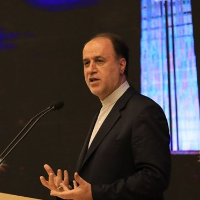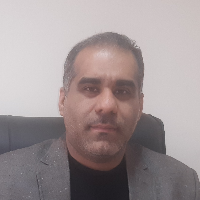The conceptual model of policy making in Islamic state with the analysis of the third sermon from the book Tammam Nahj al-Balaghah
The purpose of this research is to answer the question of what conceptual model and what components does policymaking in Islamic state have, based on the analysis of the content of the third sermon "Tamam Nahj al-Balaghah"?.
This research was conducted with the qualitative and quantitative content analysis method in order to examine the third sermon from the book "Tamam Nahj al-Balaghah" which includes important components and materials in this field. In this way, the text is intersected based on the governance approach and labeled using Microsoft Excel software. Some of the tags were Classification of the audience, historical background, main and secondary topic, stage of the governance process, policy-making stage, governance areas and the components of each of them. Finally, the research data was processed, categorized and quantified.
The research findings can be summarized in several points. Using the method of content analysis to organize the qualitative and quantitative data obtained from the textual research in religious sources with different approaches providesgreat help to religious research. In this research, by using this method, a policy model for the Islamic state is presented.From the third sermon of the book "Tamam Nahj al-Balaghah”, a policy model can be extracted in various areas of governance in most of its levels, such as paradigms, goals and strategies. Considering the important place of policy-making among the components of governance, the extracted policy-making model can facilitate the design of the comprehensive model of the Islamic state. In this model, both the theoretical background of some goals of religious governance andthe strategies to achieve those goals were defined.sectoral policies should be adopted according to general policies. These policies have paradigms such as preserving the essence of religion, theism, the legitimacy of rulers and the priority of maintaining social unity and cohesion. These policies include the institutions of the wilayah, education andfamily, and one of its strategies is to pay attention to the process of trusting God in all matters.Among the sectoral policies, the cases related to cultural policies were more frequently in the whole sermon than other cases. This is a proof of the importance of religion and culture in Alavi governance, especially in the critical situation after the Safin war. The priority of national unity over religious and cultural reforms and anti-value of racism and ethnicism in family relations were among the paradigms of cultural policy. Strengthening the historical memory of the society and valuing the practical reason and natural understanding of human beings have been examples of cultural strategies in this category of Alavi governance policies.Among the components of economic policies, there are paradigms such as the priority of national security and cohesion over economic justice and receiving taxes based on actual earned income. Allocating land to individuals and families for development, agriculture and settlement has been one of the strategies considered by the economic governance of Imam Ali (AS).Among the strategies of media policy, we can mention things like persuading the audience with non-Islamic arguments, providing accurate and timely information, and expressing the various achievements of Islamic governance.
As the main actor in governance, Imam Ali (A.S) planned the required policies according to the current situation of the society and according to the foundations of the school of Islam. According to the reception or turning away of the people, those policies should be implemented to varying degrees of strength in order to maximize progress towards the desired society in Islamic civilization. At the same time, the media arm supports the implementation, announcement and modification of policies. The models related to this type of activity drawn in the text of the research.
-
The Mongol invasion and the place of future thinking in literary works of the 7th and 8th centuries of Hijri(Case study of Hafez)
*
Journal of Future Studies of the Islamic Revolution, -
Reviewing and criticizing the entry "Social Sciences and the Quran" in the Encyclopedia of the Quran (EQ)
Samaneh Mirmoradi, *
Journal of Social Studies of the Quran, -
Evaluation of the real strength of Mohammadreza Pahlavi's army based on the approach of Stephen Biddle
*, Hossein Molaei
Journal of Islamic Revolution Research, -
Areas and educational requirements of the Education Transformation Document of the Islamic Republic of Iran
Hamidreza Hajibabaei *, Hamidreza Mirazimi, Ebrahim Masouri
Journal of Educational and Scholastic Studies, -
Presenting the Competency Model of Cultural Managers from the Perspective of Nahj al-Balagha
Hamid Nikzadeh*, HamidReza Haji Babaei, Zahra Rezazadeh Askari, Mashallah Valikhani, Vahid Vahdate Javan
Journal of Applied Issues in Islamic Education, -
Clarifying the Issue of "Wife Beating" in Light of the Quran's Approach to Domestic Violence
*
Islamic Studies and Quranic Research in the Contemporary World, -
The issue of influence in the government and the strategy with it based on the analysis of Surah Manafekun
Nobari Alireza *, Seyed Shahabeddin Yaghoubi Hiagh
Scientific Journal of Defense Policy, -
Analyzing the content of Imam Ali (AS)'s letters to Executive officers with a focus on the principles of governance
, Sayed Shahabuddin Yaghoubi Hiagh *
Islamic Politics Research,




